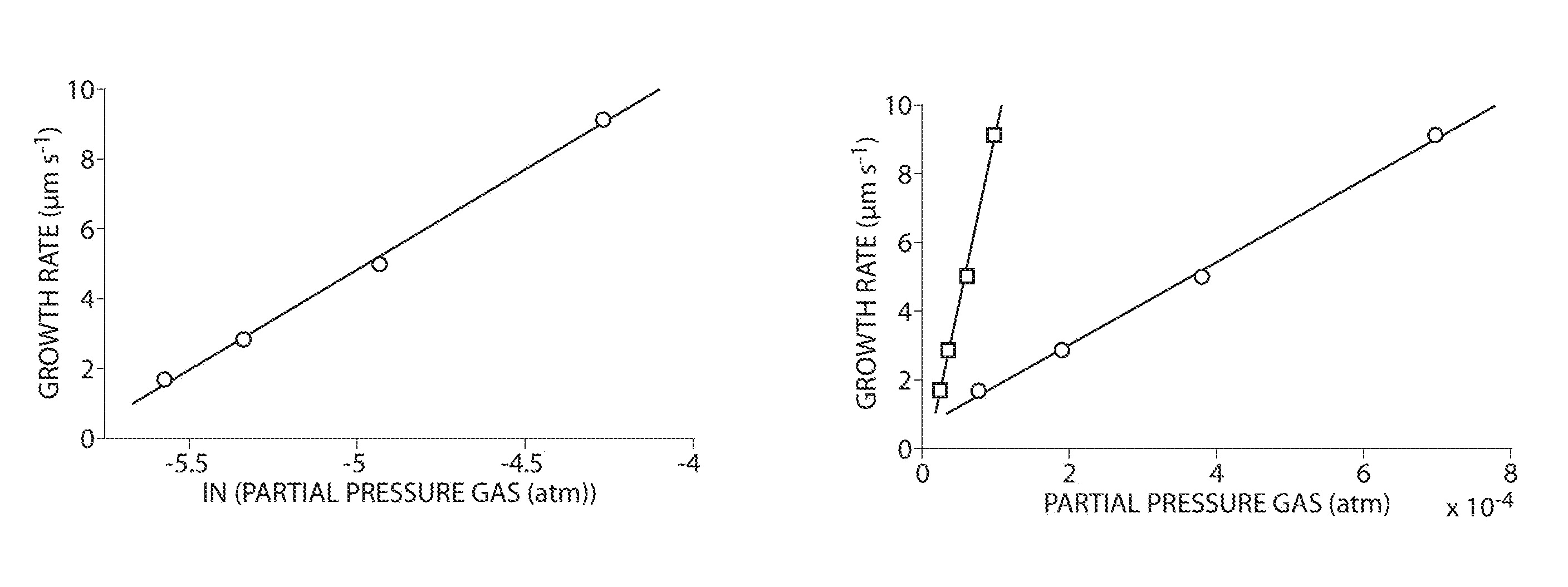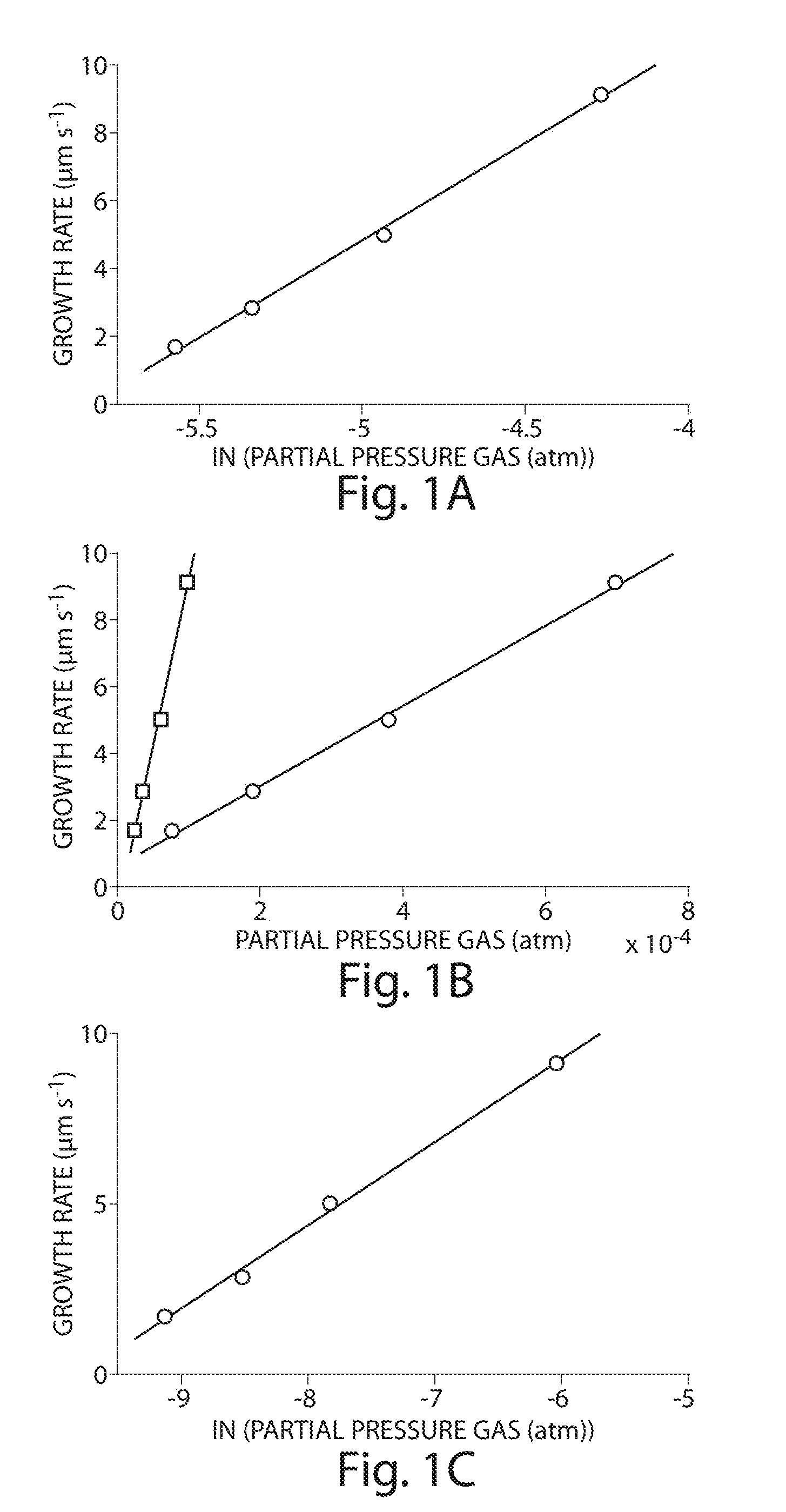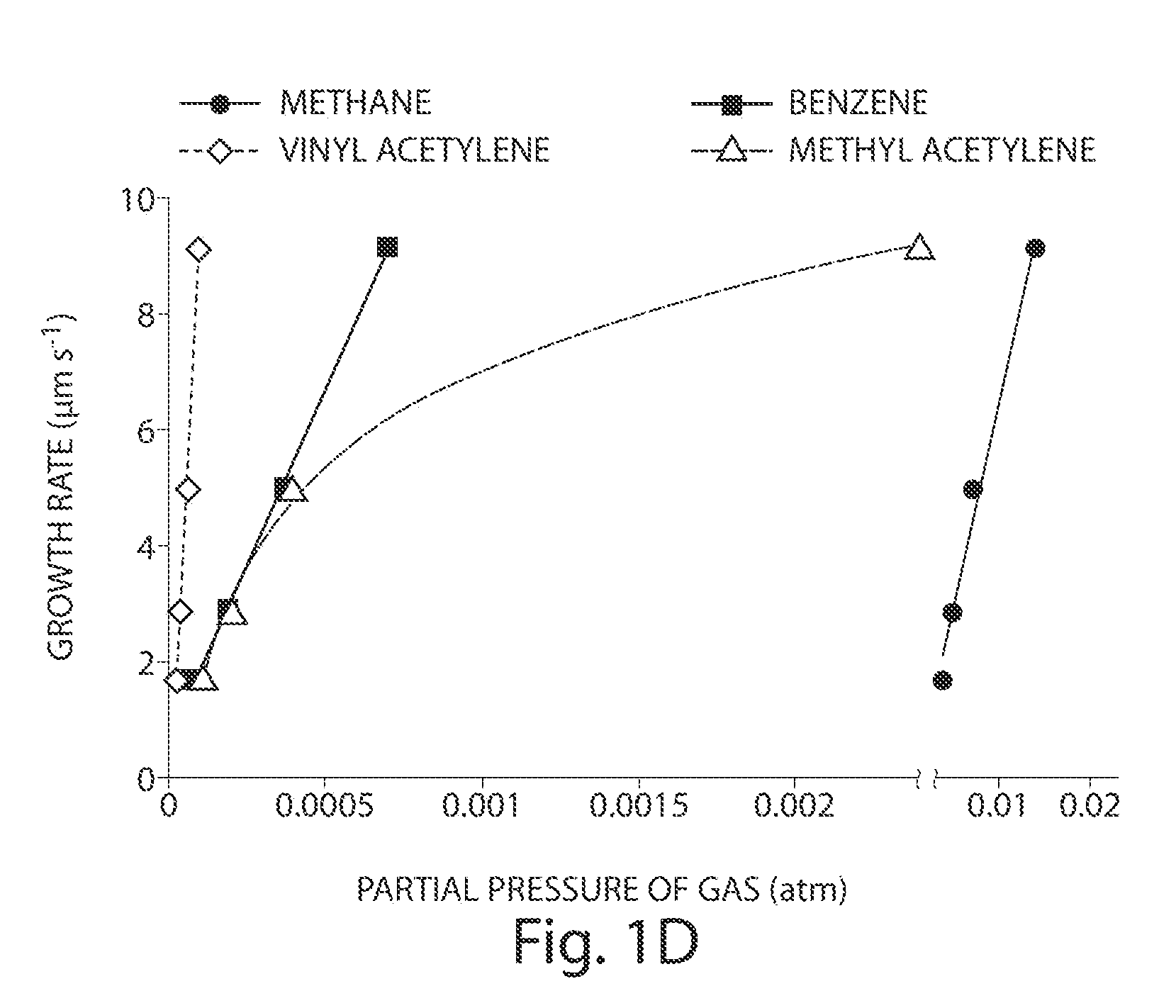Alkyne-assisted nanostructure growth
a technology of nanostructures and alkyne, applied in the field of nanostructures, can solve the problems of affecting and many known methods of large-volume cnt production, including catalytic chemical vapor deposition (cvd), and posing threats to the quality of air, water and soil
- Summary
- Abstract
- Description
- Claims
- Application Information
AI Technical Summary
Benefits of technology
Problems solved by technology
Method used
Image
Examples
example 1
[0077]The following example describes the identification of thermally generated CNT precursor molecules. FIG. 6B shows a schematic diagram of an atmospheric-pressure, cold-wall CVD reactor with decoupled thermal control over feedstock and catalyst. Throughout this study, feedstock gases were delivered in one of two modes: (1) with thermal treatment (Tp=680-1040° C., C2H4 and H2 only) or (2) without thermal treatment (C2H4 and H2 and a test gas, “X”). The catalyst substrate temperature (Ts) was 725° C., unless otherwise noted. The height of the growing CNT forest was monitored with a laser displacement sensor. Using the CVD reactor shown in FIG. 6B, the temperatures of the feedstock and catalyst were independently controlled. The C2H4 / H2 growth mixture was heated to various “pre-heat” temperatures, Tp (860-1040° C.), and then cooled to room temperature prior to impingement on a substrate-affixed, locally-heated metal catalyst (1 nm Fe / 10 nm Al2O3 / 675 um Si). Simultaneously, the compo...
example 2
[0080]The following example describes a general procedure for CNT synthesis. In order to measure in situ VA-MWCNT height during the reaction progress, a custom-built CVD reactor was used with a laser displacement sensor mounted above the growth chamber, as shown by the schematic diagram in FIG. 6A. Traditional growth feedstock gases (C2H4 / H2) and annealing gases (He / H2) are introduced via a resistively heated pre-heater tube that was operated in two modes: (1) “on” at 1000° C. and (2) “off” at room temperature (21° C.). With the pre-heater off, test gases (e.g., 1,3-butadiene, acetylene, methyl acetylene, 1-butyne, vinyl acetylene, methane, ethane, or benzene) were introduced during the growth phase via a secondary input line, which could be flushed to a vent via a 3-way valve during the flush and anneal phases. The flow rate of the test gas was balanced with an additional helium line that was cryogenically purified with a Porasil-C column immersed in liquid nitrogen. For all experi...
example 3
Accelerated CNT Growth without Heating Feedstock Gases
[0083]Using a decoupled CVD reactor, the temperature of VA-MWCNT metal catalyst and C2H4 / H2 feedstock was independently controlled while monitoring the composition of gases evolved from the pre-heater, as well as the in situ VA-MWCNT forest growth rate. As the pre-heater temperature increased (from 690 to 1200° C.), the growth rate of the VA-MWCNT forest increased. FIG. 1 shows various graphs illustrating the correlation between thermally generated compounds and increases in VA-MWCNT growth rate. In all subplots, the symbols are measured data and the line is the best-fit curve. FIG. 1A shows methane's abundance was equally well fit by linear and logarithmic relationship with the growth rate (R2=0.99, n=4). FIG. 1B shows that benzene (circles) and vinyl acetylene (squares) were linearly related to the growth rate (R2=0.99, n=4). FIG. 1C shows that methyl acetylene is logarithmically related to the VA-MWCNT growth rate (R2=0.99, n=...
PUM
| Property | Measurement | Unit |
|---|---|---|
| temperature | aaaaa | aaaaa |
| temperature | aaaaa | aaaaa |
| temperature | aaaaa | aaaaa |
Abstract
Description
Claims
Application Information
 Login to View More
Login to View More - R&D
- Intellectual Property
- Life Sciences
- Materials
- Tech Scout
- Unparalleled Data Quality
- Higher Quality Content
- 60% Fewer Hallucinations
Browse by: Latest US Patents, China's latest patents, Technical Efficacy Thesaurus, Application Domain, Technology Topic, Popular Technical Reports.
© 2025 PatSnap. All rights reserved.Legal|Privacy policy|Modern Slavery Act Transparency Statement|Sitemap|About US| Contact US: help@patsnap.com



